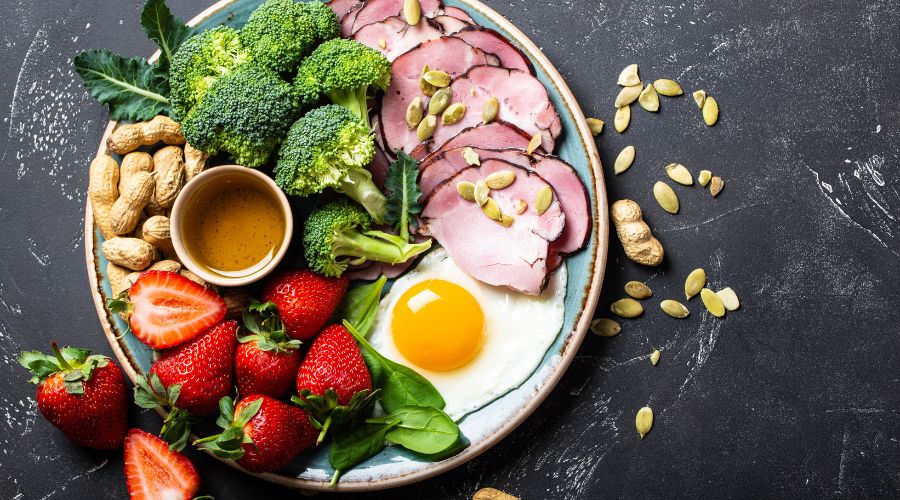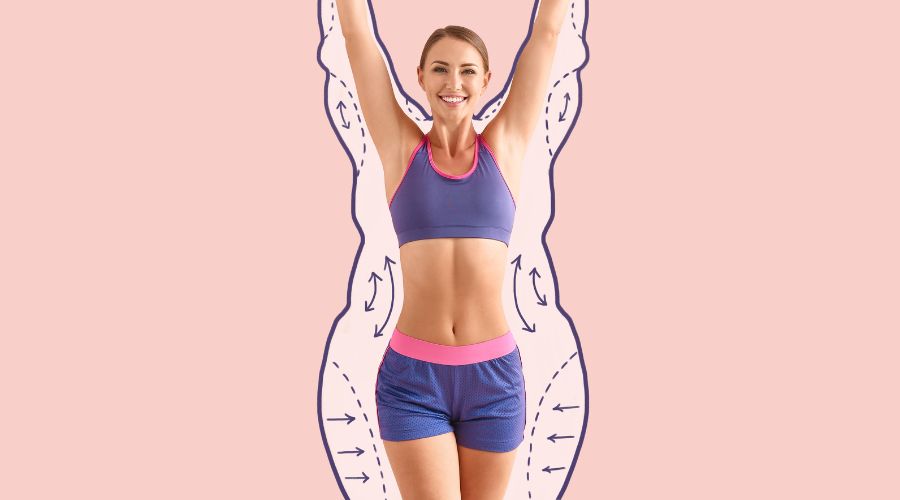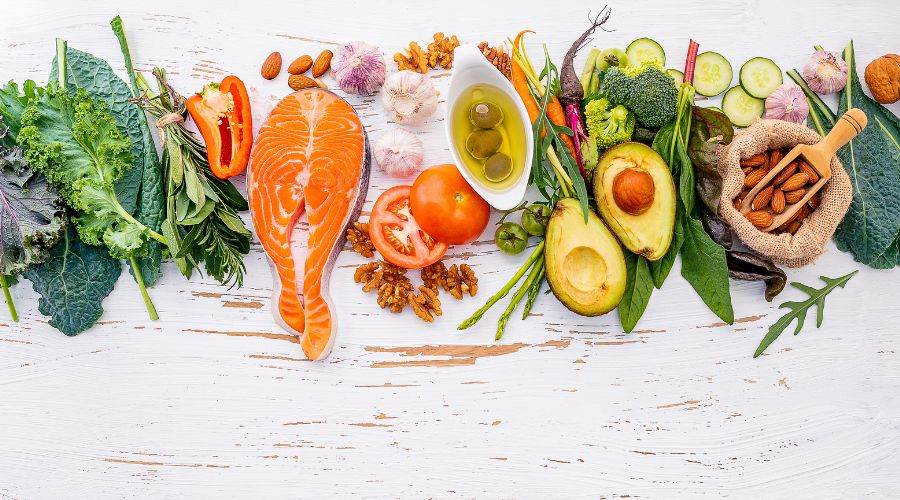The ketogenic diet is a high-fat, rich protein, and low-carb diet plan that is frequently used in traditional medicine to treat children with epilepsy. One may become unconscious if they have this disorder. The diet offers the body to burn fats not carbohydrates. The ketogenic diet promotes fat burning by replacing carbohydrate intake with fat. The diet allows people to lose weight and also helps in improving their health. Many diseases like cancer, Alzheimer’s, and diabetes can be resolved by this diet.
The keto diet is similar to many low-carb diets. As in low-carb diets also dieticians recommend people reduce carbohydrate intake and replace it with fat. Through these kinds of diets, your body enters a metabolic condition known as ketosis which results in the cutback of carbohydrates. Furthermore, it causes the liver to produce ketones from fat and ketones are used by the brain as fuel.
1. Types of Ketogenic Diet

Standard Ketogenic Diet (SKD): SKD is high in fat, average consumption of protein and a very low-carb diet. It has 70–75% fat, 20% protein and 5–10% carbohydrate content. A diet considered a ketogenic diet is based only on one factor: fat should make up the majority of calories in the diet. Vegetables are an important part of this diet, especially non-starchy vegetables as they have a very low carbohydrate content. Traditional keto diets are best if followed correctly. This helps in managing blood sugar levels, losing weight and also enhances cardiovascular health.
The SKD is the best option for you if you follow low- to moderate-intensity workouts like yoga, walking, light weightlifting and cycling. The people that follow the diet should maintain a strict carb intake to maintain ketosis. A maximum of 30g or less per day is the number of carbs that one can consume. It can differ according to your body also. It is always advised to stop the intake of food that includes added sugar, and starch or is high in carbs. In SKD the only sources of carbs are seeds, low-carb veggies, nuts and high-fat dairy products.
Cyclical Ketogenic Diet (CKD): CKD is also known as card backloading. In this diet, the consumption of carbohydrates is included in a different way like two days of higher carb intake followed by five ketogenic days. CKD is designed in a way that the traditional ketogenic diet is combined with a few carbohydrate-loading days. This diet is followed by athletes and bodybuilders as they get trained with intensity and high volumes to get the best results. They want more intake of carbohydrates to replace muscle glycogen drain after exercise. To properly restore their glycogen levels and to balance sugar levels for the training sessions carbohydrate refeeding is mandatory for them.
Targeted Ketogenic Diet (TKD): TKD is a typical ketogenic diet. The diet allows you to consume carbs before and after the workout. Basically, it is a middle way in which the rules of both diets SKD and CKD are followed. It follows a traditional ketogenic diet but also allows you to eat carbs. The diet is based on the idea that when you exercise you need carbs to provide you energy so carbs intake before and after the workout is necessary.
This carb intake will absorb much more effectively providing you with energy for the whole day. The diet supports high-intensity exercise and also encourages glycogen refilling. If you do low- to moderate-intensity exercises then TKD is not for you. TKD is advised to those people who do high-intensity exercise but do not want to intake carbs as suggested in CKD or who are just new to high-intensity workouts and are not prepared to have a CKD diet plan.
2. Can You Lose Weight by Keto Diet?

Certainly, it is a well-known and efficient method for losing weight quickly, but it has high protein and fat and low carbohydrate requirements. When following a ketogenic diet, the body becomes particularly effective at utilising fat for energy instead of glucose. In the first week of a ketogenic diet, we normally lose weight up to 3 kilos since it can suppress appetite and over 6 months we can lose weight by 20 kgs on the keto diet. When we start the keto diet we feel tired and may suffer a mild headache which is’ keto flu.’ In the first month of the Keto diet, we start to feel the impact of the keto diet.
3. Foods You Can Eat

You can consume anything that is very low in carbohydrates or is keto-friendly, such as cheese, veggies with genuine butter, meat, fish, and shellfish.
Vegetarian Options: You can eat as much as you like of non-starchy vegetables including salad ingredients like cucumber, celery, radishes, cauliflower, cabbage, avocado, broccoli, and zucchini. The majority of vegetables that are grown above ground can be consumed fresh or frozen. Even a vegetarian keto diet is possible. If you limit your intake, most tart fruits including berries, lemons, and limes are ok. Melons, with their high water content, have a similar effect. But the sugar content of practically all other fruits is excessive. A simple yet luxurious keto dessert is a small scoop of fresh berries topped with real whipped cream and shaved dark chocolate. You can also low-carb nuts and seeds but don’t eat a lot of them. Start with a small amount and work your way up to 1/4 cup as a snack. The keto diet can include cheese, butter, and cream. Particularly Greek yoghurt provides a protein-rich breakfast with little carbohydrates. Avoid flavoured low-fat yoghurt, which is frequently loaded with extra sugar. You may also have salad dressings, cook with olive oil, and top it with cheese.
| Vegetables | Cauliflower, Avocado, Broccoli, Cabbage, Zucchini, Spinach, Asparagus, Kale, Green Beans, Brussels Sprouts. |
| Fruits and Berries | Blackberries, Coconut, Lemons, Limes, Raspberries, Strawberries. |
| Nuts and Seeds | Almonds, Brazil Nuts, Hazel Nuts, Macadamia Nuts, Peanuts, Pecans, Pine Nuts, Walnuts. |

